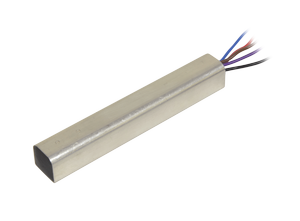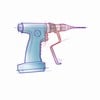How to Select a Brushless DC Motor Controller
Featured Product from Portescap

Brushless DC (BLDC) motors offer several advantages over traditional brushed DC motors, including higher efficiency, longer lifespan, and greater reliability. However, to operate a BLDC motor, you need a specialized motor controller that provides the necessary electrical signals to control the motor's speed, direction, and torque. Let’s explore how to select a brushless DC motor controller that will meet the needs of your application.
- Determine Your Motor’s Electrical Requirements. The first step in selecting a controller for your BLDC motor is to determine your motor's electrical requirements; this includes the motor's rated voltage, current, and power rating. You can typically find this information on the motor's datasheet, but it can also be found by using a multimeter to measure the motor's electrical characteristics. The controller you choose must be capable of handling the motor's voltage and current ratings.
- Consider Your Control Requirements. The next step in choosing a controller is to consider your specific control requirements. Examples include the type of control method you want to use (sensor-based or sensorless), the required resolution of motor speed control, and the communication interface with your control system. Keep in mind that BLDC motor controllers support multiple control methods and communication interfaces, so make sure you select one that meets your specific requirements.
- Evaluate the Controller's Performance Characteristics. Once you have determined your motor's electrical and control requirements, it's time to evaluate the performance characteristics of the motor controller. Some key performance parameters to consider include:
- Maximum Current and Voltage Ratings. The motor controller must be capable of handling the peak current and voltage requirements of the motor.
- Operating Frequency Range. The operating frequency range of the motor controller should match the requirements of your application.
- Efficiency. Look for a motor controller with high efficiency to minimize power losses and improve overall system performance.
- Protection Features. Consider motor controllers with built-in protection features such as overcurrent protection, overvoltage protection, and overtemperature protection to prevent damage to the motor and controller.
- Thermal Management. Choose a motor controller with proper thermal management features to ensure reliable operation under high-temperature conditions.
Selecting a BLDC motor controller requires careful consideration of several factors, including the motor's electrical requirements, control requirements, performance characteristics, and form factor. By following the steps outlined above, you can choose a motor controller that not only meets your specific requirements, but ensures reliable and efficient operation of your brushless DC motor.
Our experts are more than happy to help you select the ideal controller for your BLDC motor – simply reach out to us here to discuss!










